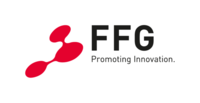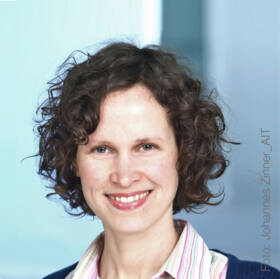comfort:zone - Expanding the personal comfort zone of underrepresented groups in an inclusive mobility system. Develops a tool that helps to strengthen the position of underrepresented groups in transportation planning.
Background
Designing public spaces in which all users feel welcome and comfortable is a complex task, because different wishes and needs have to be considered. While established groups (e.g., social middle class, car users) have a strong say in these processes, other groups are less heard or have little opportunity to lobby for their specific interests. Consequently, measures to create a balance are needed.
Project content
The project comfort:zone contributes to a future-proof, inclusive (i.e., including underrepresented groups) and user-centred mobility system. This goes hand in hand with a shift towards active (walking, cycling etc.) and sustainable mobility. However, such a shift can only be accomplished, if the individual challenges and needs of all road users are taken into account. A key aspect influencing citizens’ mobility behaviours is personal well-being (comfort:zone). The comfort:zone, however, is often compromised by shortcomings and weak points in public spaces and the mobility system. These shortcomings – to name a few – include so-called spaces of fear, physical obstacles, inadequate orientation aids, unnecessary detours, or missing offers. Eliminating such weaknesses and giving a stronger voice to underrepresented groups and their concerns (i.e., empower them) is the main objective of the present project.
Goals
Comfort:zone intends to strengthen the position of underrepresented groups and to include them more prominently when planning transport infrastructure (stationary as well as moving traffic). In a participatory process with Austrian municipalities, the needs of these groups shall receive adequate attention and become an integral part in future planning processes. The aims of the project are:
- Giving high priority to inclusion and intersectionality (i.e., taking into account the concerns of different interest groups) in the planning of sustainable mobility. Underrepresented groups are involved in the planning processes to better understand where they see problems and shortcomings.
- Giving more people access to active mobility.
- Promoting sustainable forms and patterns of mobility.
- Enabling broad participation in the development and management of inclusive mobility systems.
- Reducing emissions and immissions as well as energy and resource consumption through active and sustainable mobility.
- Taking into account the ecosystem when planning transportation routes.
Methodology
Comfort:zone applies different Citizen Science methods to identify shortcomings in transport systems. The habits and needs of underrepresented groups with different backgrounds are taken into account and thus become part of the planning processes. Methods for a continuous collection of information, for the transmission of this data to the administrative authorities, and for a better involvement of citizens in all these processes are designed and evaluated. Comfort:zone also uses a tool to collect feedback from road users, to identify weaknesses in the transport system, and to visualize these weak spots on a map using GPS points. Comfort:zone adds further functionality to this tool by making it usable for active and sustainable mobility and tailoring it to the needs of underrepresented target groups in the transport system.
Result
Austrian municipalities still give car traffic the highest priority and plan infrastructure accordingly (space, priority rules, potential hazards). This disadvantages other, non-motorized road users. To remedy the situation comfort:zone develops and uses planning tools that support and promote active, sustainable mobility and eliminate deficits in public space impeding underrepresented road users. In addition, individual multimodal (i.e. different means of transport and transport routes) routes for active mobility (direct benefit for citizens) become visible and possible infrastructural improvement measures are shown. Users are empowered, as they receive evidence-based data and supporting material that lend more weight to their arguments and help them to better communicate their concerns to administration and politics.
Project Logo designed by Roland Hackl.
You want to know more? Just ask!
Department of Rail Technology and Mobility
- bitsfabrik
- tbw research GesmbH





